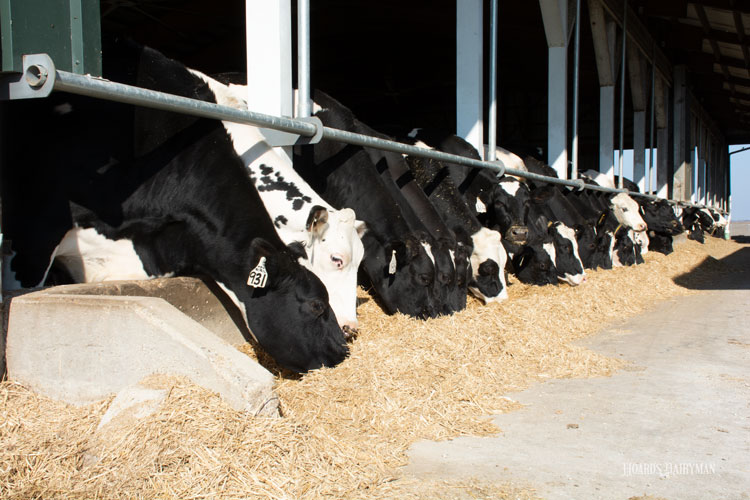
When every dollar counts, milkfat and protein levels in milk are extremely valuable in maximizing income over feed costs (IOFC). Unfortunately, this is the time of year when components, particularly milkfat percentage, start to drop.
“We are fighting a fairly strong seasonal trend on milkfat percentage right now,” said Tom Overton, Cornell University, during his presentation at the Professional Dairy Producers of Wisconsin (PDPW) Annual Business Conference held in Madison, Wis.
“There is a relatively strong seasonal decline in the spring, and milkfat percentage bottoms out in summer time. Then, it increases in the fall,” he explained.
While dairy producers can’t change the calendar, Overton shared other common risk factors for low components that can be managed around. They fall into two categories: nutritional factors and non-nutritional factors.
Nutritional factors include:
- High availability of linoleic acid (a result of the unsaturated fat source, amount, and type of processing)
- Altered ruminal biohydrogenation (caused by low rumen pH, feed quality issues such as mycotoxins, and changes in eating behavior)
- Slow rates of biohydrogenation (a result of fish fatty acids or ionophores in the diet)
- High rates of passage (could be from high milk production and high dry matter intake)
Overton pointed out it is often not one factor but an interaction among several factors that are responsible for lowering milkfat.
Looking specifically at forages, wet corn silage and starch availability in corn silage are contributing factors. Mycotoxins or high yeast counts in corn silage or high moisture cereals could be as well.
Facility and management (non-nutritional factors) aspects such as stocking density, daily time budgets for cows, heat stress, and feeding to an empty bunk all have the potential to encourage slug feeding or alter eating patterns.
The good news, Overton said, is that changes made in the herd today to improve milkfat percentage should be noticeable fairly quickly.
“The nice thing about components in general is that you’re usually going to know in the bulk tank in a couple weeks if your adjustments will move components, especially milkfat, one way or another,” he said. “A lot of things related to components are fairly short term, and you will get some indication if the change makes sense before long.”








